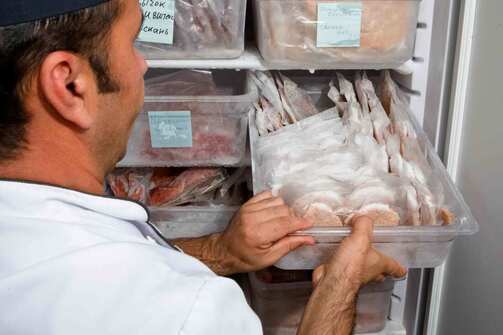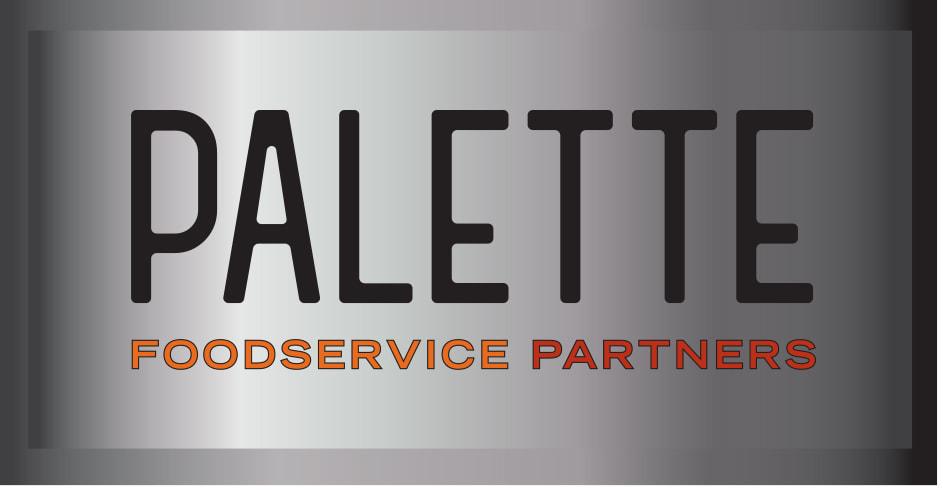 For every dollar a restaurant invests in food waste reduction, it generates $8 in savings, according to the World Resources Institute. In a business of slim margins, that can add up to significant savings – and that’s just counting food waste. Are there areas of your operation where waste management in general could be better? Your technology can help you identify and manage them on an ongoing basis. Start with your food and the other supplies you need to serve guests and run your business. Your inventory management system can help you improve your order precision and ingredient use so you avoid spoilage and can more readily identify when theft occurs – or be alerted in the moment if there has been a run on a particular supply. Using tech tools to manage portions (and measure discarded ingredients) can help you ensure your staff, regardless of how long they have been working in the business, are serving dishes of a consistent size and using ingredients tip-to-tail. Energy waste can generate significant expense too – one study found that 45-70 percent of electricity is wasted in commercial kitchens due to insufficient training and poor equipment maintenance, for example. Tech-based training and digital maintenance logs can help you manage that waste and alert you to potential problems. Beyond that, consider energy-efficient lighting and equipment, as well as sensor-monitored equipment that can be controlled remotely and also help you monitor malfunctioning appliances before they become a problem that generates significant waste.  Your ability to manage what’s happening at the back of the house – and particularly the ingredients that you have available – can make as much of a difference to your guest experience as a streamlined ordering and payment process. Your inventory management tools should help you communicate in real time about what you are able to serve guests and what items shouldn’t be advertised for sale. At the same time, it should empower you to stay a step ahead of such events so you’re not often in the position of having to tell guests you’re out of the dish they specifically came to your restaurant to enjoy. While being able to fulfill a guest’s anticipated order won’t necessarily build their loyalty, not having that dish will certainly chip away at it.  Is there room for you to remove manual processes from your inventory management? Adopting an automated inventory management system that integrates with your POS can help your business more quickly identify problems that waste resources. You can remove human error from the ordering process, forecast your needs more accurately, lower your food costs, and more quickly pinpoint where you’re experiencing product theft, breakage, spoilage or other waste. Having real-time information at your fingertips simply makes you nimble. As this report from Restaurant Technology News indicates, these tools help you monitor stock levels and their corresponding value in real time, which helps you calculate recipe costs and ensure you’re offering a profitable combination of items as you swap ingredients in and out.  As restaurant operators know, money is made at the back of the house. The steps you take to get a better handle on everything from portioning food to managing inventory translate into important savings. Adopting tools to monitor waste is a big one. Research from the Natural Resources Defense Council estimated that 22-33 billion pounds of food is wasted by restaurants every year, with about 7 percent of it wasted before it even reaches the customer. To get a better handle on how much food you’re wasting, you have to track all possible sources of it. A report from The Rail advises operators to have staff keep a log – ideally a mobile app connected with your inventory management software – of every instance of spills, misfires, burned or ruined orders, spoiled or expired ingredients, comped meals, theft, and scraps from paring, cutting or butchering. Patterns may emerge from this that allow you to zero in on the habits and practices that generate waste for you.  There is a lot of waste – and therefore money – that can hide in your inventory. The topic loomed large in a recent survey of restaurant operators by the National Restaurant Association and the accounting software provider Sage Intacct. Inventory management systems rose to the top of the list of technologies restaurant operators are looking to implement in the next one to two years. The responses represent an evolution from how operators were feeling in the middle of the pandemic, when delivery apps and QR codes jumped in popularity. Regardless of the times, being able to manage your inventory with greater precision can be a significant boost to your efficiency. It can help you tighten up your menu and ensure that every ingredient you have on hand is pulling its weight in terms of profitability and popularity. At the same time, it can minimize the space you need to store what you serve, the amount of food coming back to the kitchen untouched, and the scraps you have to discard.  If there is a silver lining to the past couple of years in the restaurant industry, it could be that operators have become significantly more nimble. Technology has supported this transition, enabling restaurants to monitor and measure everything from ingredient waste to menu profitability. Expect even more fine-tuning as restaurants continue to manage steep operating costs. That will include greater precision when it comes to not just ingredient use, but also the prediction of exactly what ingredients a restaurant will need in the near future. Chipotle, for one, is piloting a “cook-to-needs” kitchen management system in select California stores that provides demand-based cooking and ingredient preparation forecasts, according to a Restaurant Technology News report. The goal of the system is to help each restaurant make the most of its ordered ingredients, maximize freshness and minimise food waste. The report said the system uses artificial intelligence and machine learning to monitor ingredient levels in real time, then notifies the team how much to prepare, cook and when to start cooking. This information then feeds data collection that supports real-time production planning for each restaurant.  Even if you have already embraced digital ordering, QR codes and other front-of-house technology to help your operation run more smoothly, your kitchen may still look like it did a decade ago. The Spoon predicts the digitization of the restaurant kitchen will take off this year, enabling restaurants to run more nimbly and, by extension, better manage labor, monitor inventory and portion sizes, and reduce waste. Powerhouse Dynamics and Perfect Company are just a couple of the players bringing more real-time management and automation to the back of the house. Do you currently use just-in-time tools in your kitchen that allow you to flex in the moment with what’s happening in your business?  Restaurant employee theft is a common problem, accounting for 75 percent of inventory shortages and 4 percent sales, according to the National Restaurant Association. Your systems and tools can help you stop it soon after it starts – or even prevent it altogether. A TouchBistro report advises leaning on your POS for help. For example, your POS settings can help you place controls on what employees can do when placing orders – such as preventing the printing of a bill if an order has not actually been served, or the deletion of items on a bill before it is closed and then keeping the cash. Your POS reports can also help you investigate questionable activity by flagging transactions that were removed or modified after they were finalized and those that involved voids or discounts, and scrutinizing day-end reconciliations that create an opportunity for underreporting earnings. It can show you how many times a cash drawer was opened and by whom, so you can quickly identify the employees to speak to in the event of a shortage. It can also identify discrepancies between an employee’s scheduled hours and how many hours they are reporting. Beyond your POS, consider the use of cameras at your POS and inventory storage areas, which can help you send the message that you’re committed to keeping everybody honest. How well do you know the origins of the food you serve? Restaurants are able to collect a growing amount of information about the items they order – and that can enable much more powerful buying decisions and better management of food supply risks. Beyond fine-tuning inventory needs based on how your guests are ordering and helping you minimize waste, restaurant operators and other companies in the food supply chain are starting to use artificial intelligence to track and contain supply chain risks – say, tracking a recalled product and mining reams of data to identify trends from it or determine whether a specific supplier, distributor, or environmental problem is to blame. The company FourKites, which helps fine-tune shipment tracking for food suppliers ranging from US Foods to Tyson Foods, is one company bringing greater visibility to the supply chain.
You know that technology can help you better identify countless areas of inefficiency in your restaurant – but where is the best place to start with it? Using tech to get a precise handle on your prime costs could be it. These expenses represent such a high percentage of your sales – about 61 percent, according to BDO’s “The Counter: Restaurant Industry Scorecard” from 2019. A new eBook from the financial software company Sage Intacct, “Best Practices for Data Driven Restaurants,” says operators should be able to view their cost of goods sold on their dashboard and drill down on specific parts of their inventory and menu categories. This can help them flag potential costs to renegotiate or problem areas to investigate, like an item that is costing too high compared to budget, an ingredient that isn’t being measured accurately, or a menu item that isn’t priced profitably. The eBook also advises the automation of invoice processing – not only to cut back on time-consuming tasks where errors are likely to occur, but also to get real-time insights into food costs.
|
Subscribe to our newsletterArchives
April 2024
Categories
All
|





 RSS Feed
RSS Feed